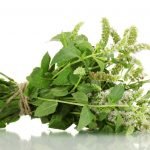Lifestyle Factors Most Closely Correlated with Dying
Node Smith, ND
Smoking, divorce and alcohol abuse have the closest connection to death out of 57 social and behavioral factors analyzed in research published in Proceedings of the National Academy of Sciences.
Smoking, divorce and alcohol abuse have the closest connection to death out of 57 social and behavioral factors analyzed
The study analyzed survey data collected from 13,611 adults in the U.S. between 1992 and 2008, and identified which factors applied to those who died between 2008 and 2014.
“It shows that a lifespan approach is needed to really understand health and mortality,” said Eli Puterman, assistant professor at the University of British Columbia’s school of kinesiology and lead author of the study. “For example, instead of just asking whether people are unemployed, we looked at their history of unemployment over 16 years. If they were unemployed at any time, was that a predictor of mortality? It’s more than just a one-time snapshot in people’s lives, where something might be missed because it did not occur. Our approach provides a look at potential long-term impacts through a lifespan lens.”
Life expectancy in the U.S. has stagnated for three decades relative to other industrialized countries, raising questions about which factors might be contributing. Biological factors and medical conditions are always at the top of the list, so this study intentionally excluded those in favor of social, psychological, economic, and behavioral factors.
Of the 57 factors analyzed, the 10 most closely associated with death, in order of significance, were:
1. Current smoker
2. History of divorce
3. History of alcohol abuse
4. Recent financial difficulties
5. History of unemployment
6. Previous history as a smoker
7. Lower life satisfaction
8. Never married
9. History of food stamps
10. Negative affectivity
Data came from the U.S. Health and Retirement Study
The data came from the nationally representative U.S. Health and Retirement Study, whose participants ranged in age from 50 to 104, with an average age of 69.3. These surveys didn’t capture every possible adversity — neither food insecurity nor domestic abuse was addressed, for example — but the new findings provide an indication of where various factors stand in relation to each other.
“If we’re going to put money and effort into interventions or policy changes, these areas could potentially provide the greatest return on that investment,” Puterman said. “Smoking has been understood as one of the greatest predictors of mortality for 40 years, if not more, but by identifying a factor like negative affectivity — this idea that you tend to see and feel more negative things in your life — we can see that we might need to start targeting this with interventions. Can we shift it and have an impact on mortality rates? Similarly, can we target interventions for the unemployed and those with financial difficulties to reduce their risk?”
UBC kinesiology masters student Benjamin Hives also contributed to the study, along with Puterman’s colleagues from the University of Pennsylvania, Johns Hopkins University, University of California San Francisco, and Stanford University.
Reference:
1. Eli Puterman, Jordan Weiss, Benjamin A. Hives, Alison Gemmill, Deborah Karasek, Wendy Berry Mendes, David H. Rehkopf. Predicting mortality from 57 economic, behavioral, social, and psychological factors. Proceedings of the National Academy of Sciences, 2020; 201918455 DOI: 10.1073/pnas.1918455117

Node Smith, ND, is a 2017 graduate of NUNM, is licensed in Oregon, and is also working towards licensure in Saskatchewan, Canada, where he lives. Node is associate editor and continuing education director for NDNR. His mission is serving relationships that support the process of transformation, which ultimately leads to healthier people, businesses, and communities. His primary therapeutic tools include counseling, homeopathy, diet and the use of cold water combined with exercise. Node has worked intimately with many groups and organizations within the naturopathic profession, and helped found the non-profit, Association for Naturopathic Revitalization (ANR), which works to promote and facilitate experiential education in Vitalism.









